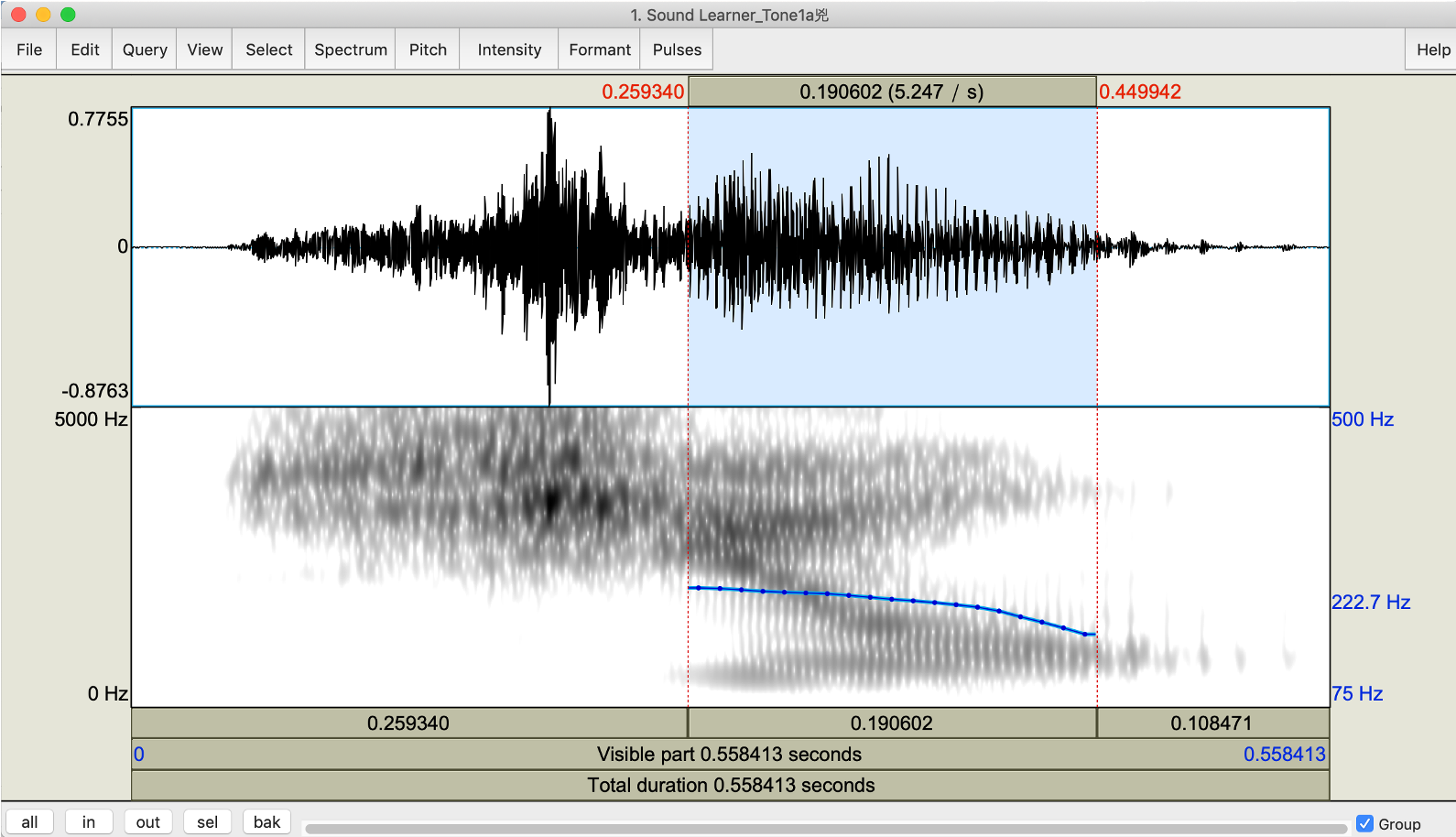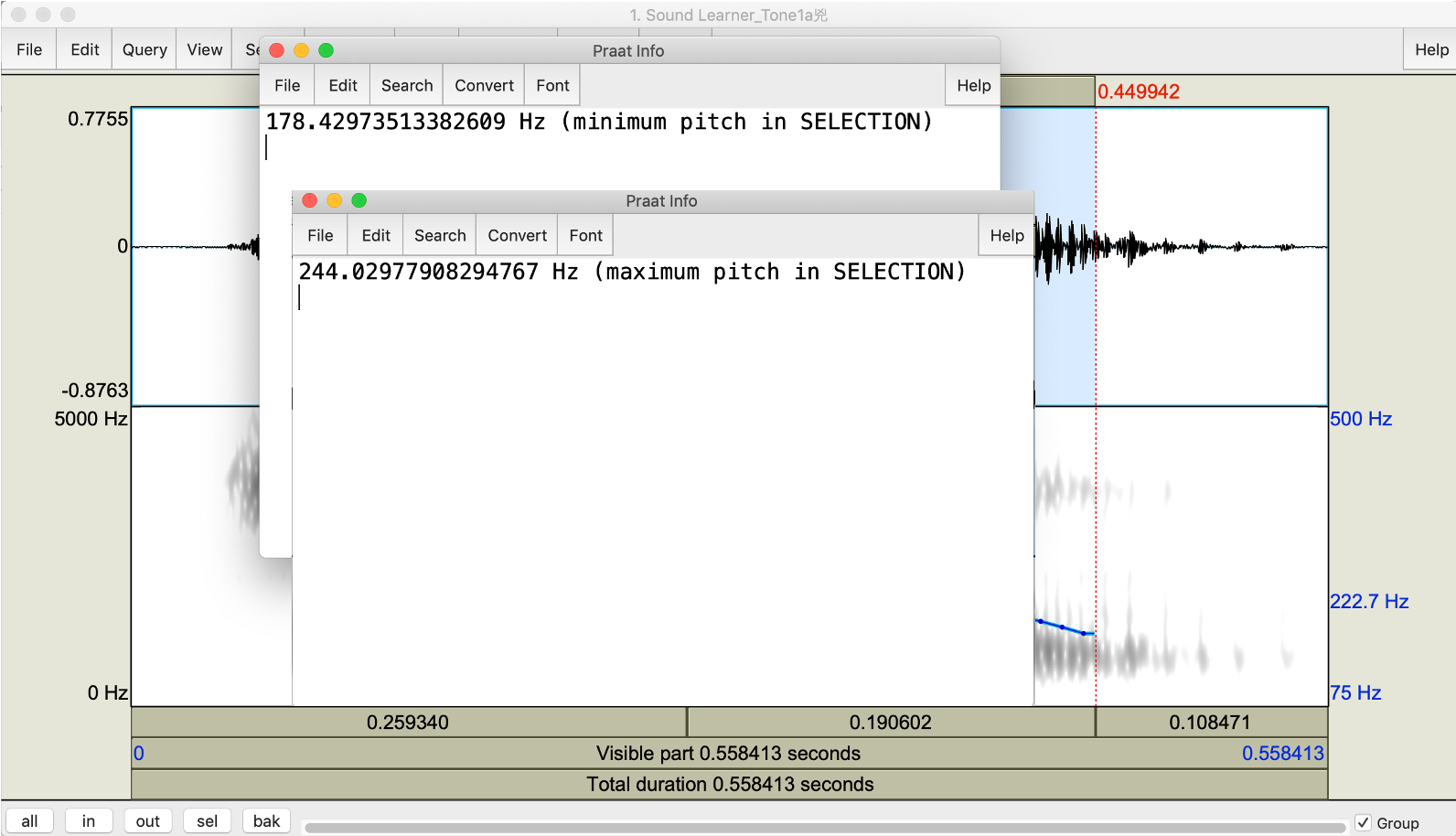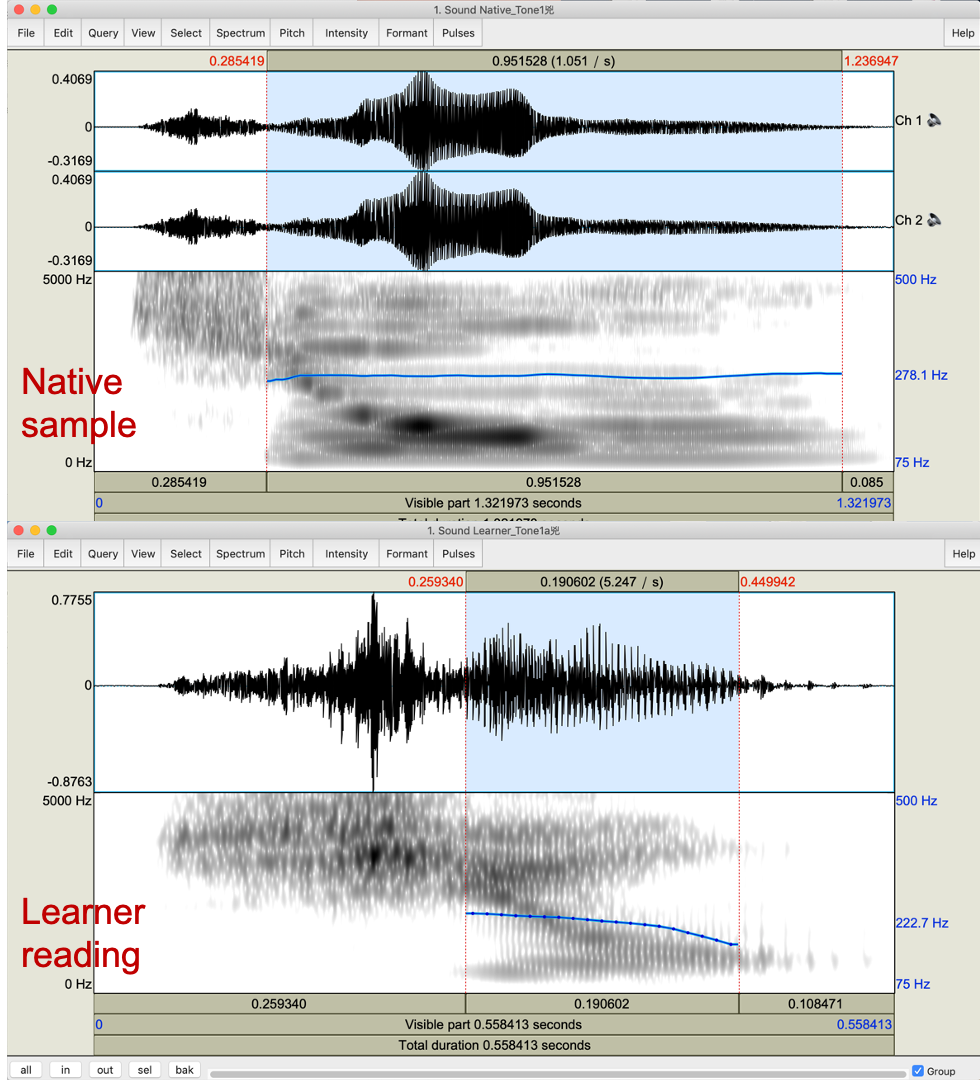In this session, we use Tone1a兇 as an example to demonstrate how to compare learner’s tone with the native speaker’s tone contour.
Measuring learner’s tone
- Open the learners’ audio, click ‘view & edit’ to enter this window.
- For Tone 1, 2, and 4, select the part containing visible tone contour and get minimum and maximum pitch values. For Tone 3, measure starting, dipping, and ending points.

Figure 15

Figure 16
In this case, the pitch range is 178Hz-244Hz.
Comparing with native speaker’s tone
Let’s compare the learner’s tone contour with the native speaker’s one. The native speaker’s tone contour of ‘兇’ is high and flat while the learner’s tone contour exhibits falling trend. In terms of pitch range, the learner’s pitch range (178Hz-244Hz) is larger than the native speaker’s (267Hz-284Hz). So, the learner pronounced Tone 1 as Tone 4 in this case.

Figure 17
Hits: 6160